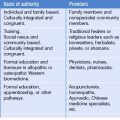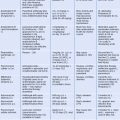CHAPTER 8 Cultural Competence
A Patient-Based Approach to Caring for Immigrants
Background
It has long been said that America is a nation of immigrants. With 28.4 million foreign-born residents in this country (according to a 2000 US Census report),1 this is as true today as ever. But clinicians often care for patients – sometimes for years – without knowing much about where they came from, why they came, and how they have been affected by the change to life in this country. While some people are able to make a fluid transition to the new way of life, others have greater difficulty. On a very practical level, patients may have difficulty negotiating the unfamiliar new customs and environment, particularly those of the American medical system. At times, patients may seem ‘difficult’ when they are accustomed to a very different healthcare system.
Context
Cultural competence is the ability to provide high-quality healthcare to patients from diverse sociocultural backgrounds. Concern about cultural competence in healthcare has increased in recent years as providers and policy makers aim to close the quality of care gap between people of different racial, ethnic, and sociocultural backgrounds.2 The greater attention given to the issue of racial/ethnic disparities in healthcare, and the potential role cultural competence can play in their elimination, has further raised the expectations for this field. It is undeniable that healthcare providers today face the challenge of caring for patients from diverse cultural backgrounds who may have limited English proficiency, different levels of acculturation, limited socioeconomic means, and unique ways of understanding illness and healthcare. The 2000 US Census reported that there are 28.4 million foreign-born residents living in the United States, and about 47 million residents (18% of the total population) who speak a language other than English at home.3 In some states, such as California, the figure is as high as 40% of the population who speak a language other than English at home. Nearly half of these individuals have difficulty speaking and understanding English. Patient satisfaction and adherence to medical recommendations are closely related to the effectiveness of communication and the doctor–patient relationship.4 However, immigrants face additional challenges to communication that are not just related to their potential limited English proficiency. Sociocultural differences between doctor and patient can include those related to health and treatment be-liefs, values, styles of communication and decision-making, im-migration experiences and related fears, and trust, which among others can lead to major communication and relationship barriers that extend beyond language. Health professionals are now challenged to learn a new set of skills and a knowledge base necessary to overcome these barriers.
The Categorical Approach to Cross-Cultural Healthcare
Culture is a learned system of beliefs, values, rules, and customs that is shared by a group and used to interpret experiences and to direct patterns of behavior.5,6 While it is increasingly common that multiple social and cultural influences blur the distinguishing lines between cultural or ethnic groups, many immigrants to the United States may identify strongly with a nationality or ethnic group – Hmong, Afghani, or Haitian for example. It would then make sense to understand some of the characteristics that help to define these groups in order to better understand them. Many Hmong, for instance, have strong spiritual beliefs about health and healing and may have a certain degree of mistrust towards Western medicine. The problem is, there are hundreds of distinct ethnicities, nationalities, and cultural groups in the US, each with its own complex set of beliefs, values, and health behaviors. It would be nearly impossible to learn meaningful and clinically relevant information about all of these groups, and equally difficult to fit it into one book chapter.
The Patient-Based Approach
The patient-based approach to cross-cultural healthcare7 involves principles of both patient-centered care and cultural competence. Rather than learning about individual cultures and their characteristics – which is impractical, impossible, and can lead to stereotyping and assumptions – this approach focuses on the issues that arise most commonly due to cultural differences, and how they may impact interaction with any patient.
The Triad of Empathy, Curiosity, and Respect
At the heart of any meaningful and successful medical encounter (especially one across cultures) are three core values: empathy, curiosity, and respect. As the old metaphor goes, they are like three legs of a stool. When one is missing, the stool collapses. The stool represents our connectedness with our patients, and our ability to understand who they are, and what makes them unique. This is more than just fluff. Patients who feel their doctors listen to them, understand them, and care about them are less likely to file malpractice suits, and this type of connection can lead to better health outcomes.8 And yet, we tend not to connect with people that are different from us. The death of thousands in an earthquake in Turkey affects most of us much less than the death of a member of our own community, even if we don’t know that person. It is normal for us to care more about people who are like us, and we tend to like people who are similar to us. But imagine being a patient and feeling that your doctor doesn’t connect with you or care about you so much because you are somehow different. As physicians and healthcare providers, we are morally obligated to try to overcome these tendencies, and to care about all of our patients as equally as possible. We need to develop our ability to empathize with, be curious about, and respectful of all people, both for the sake of our patients and for our own personal growth.
Empathy is perhaps the most crucial of the three values to put into practice. It can be defined as an active process of learning about an individual, and perceiving and responding to his or her thoughts and feelings. The central techniques for this are actually quite straightforward. They involve: (1) identifying a thought or emotion that a patient is experiencing, (2) identifying the source of the thought or emotion, and (3) responding in a way that shows you have made the connection between the first two steps.9,10 Maintaining an attitude of curiosity towards our patients is of particular importance when dealing with people who are more likely to think and act in ways that are unfamiliar. People are fascinating when you make a small effort to learn about them. We have an entire world of cultural influences and perspectives right in our own hospital beds and waiting rooms. And as healthcare providers we have a privileged window into the lives of people with whom we may have otherwise had only the most superficial contact, if any. Respect in crosscultural interactions means that regardless of differences, people should be treated with dignity and their perspectives should be taken into account. We are used to reserving our respect for people whom we feel deserve it. We tend to have less respect for those who do not fit our expectations of how people ‘should be,’ and those expectations differ according to cultural norms. We have to be careful as providers of healthcare to apply a basic level of respect to all individuals regardless of differences in values and behavior.
The Framework for Cross-Cultural Care
Assess core cross-cultural issues
Interactions between immigrant patients and healthcare professionals often lead to misunderstandings that reflect inherent differences in cultural values and expectations. These misunderstandings can originate from healthcare providers being inattentive to ‘hot-button’ issues which can lead to outcomes ranging from mild discomfort, to noncooperation, to a major lack of trust that disintegrates the therapeutic relationship. As previously discussed, the vast number of cultural and ethnic groups in the US and their heterogeneity makes it impractical if not impossible to learn specific aspects of each that could influence the medical encounter. Fortunately, certain core cross-cultural issues tend to recur across cultures. For example, one study found a lower level of patient autonomy, and an emphasis on the role of the family in medical decision-making among both Korean and Hispanic patients compared to African-Americans and European-Americans.11
Rather than attempt to learn an encyclopedia of culture-specific issues, a more practical approach is to explore the various types of problems that are likely to occur in cross-cultural medical encounters, and to learn to identify and manage these as they arise. Box 8.1 lists five core cross-cultural issues that should be taken into account with immigrant patients in order to avoid cross-cultural misunderstanding. Once a potential core issue is recognized, it can be explored further by inquiring about the patient’s own belief or preference, which may be quite different from the ‘cultural norm.’ Box 8.2 describes three case vignettes which we will refer to in this chapter to highlight some of these core cross-cultural issues.
Box 8.1 Core cross-cultural issues
Decision-making and family dynamics
Traditions, customs, and spirituality
Styles of communication
Differences in styles of communication between patient and provider can lead to discomfort and potential miscommunication. This includes culturally based customs around both verbal communication and nonverbal communication such as eye contact, touch, and personal space. The first case vignette illustrates how some cultures may be offended by what is perceived to be inappropriate physical contact, in this case touching a patient’s head. Direct eye contact may also be avoided in some cultures while in others it is a sign of respect. Providers should be aware of their own behaviors and be sensitive to the preferences of their patients. Other aspects of communication include level of assertiveness, which may range from very deferent to very aggressive (often influenced substantially by culture). It is helpful not to assume that a patient agrees with the plan outlined by the provider (a mistake made in the second vignette). A deferent patient may simply be hesitant to voice a conflicting view, making it crucial to ask for the patient’s input and encourage verbalization of any disagreement.
Adapting to different communication styles and customs
Mistrust and trust-building
Trust is a crucial element in the therapeutic alliance between patient and healthcare provider. It facilitates open communication and is directly related to patient satisfaction and adherence to provider recommendations.12 Yet research highlights that public trust in healthcare has dropped to an all-time low from 1966 to 2002.13 While trust in one’s own personal physician has stayed somewhat higher in general, many minority patients have less inherent trust in the healthcare system due to historical mistreatment and fear of discrimination.14 While much of the literature in this area focuses on African-American patients, a recent survey by the Kaiser Family Foundation showed that Latinos and Asians also are much more likely than whites to worry that they will be treated unfairly by the healthcare system due to their race/ethnicity.13 Previous bad experiences, poor communication, disrespectful treatment, and the general loss of control that patients experience when ill can compromise trust by patients across all cultural, ethnic, racial, and socioeconomic backgrounds, but may be a particularly sensitive issue for immigrants.
Suggestions for trust-building across cultures
Stay updated, free articles. Join our Telegram channel

Full access? Get Clinical Tree







